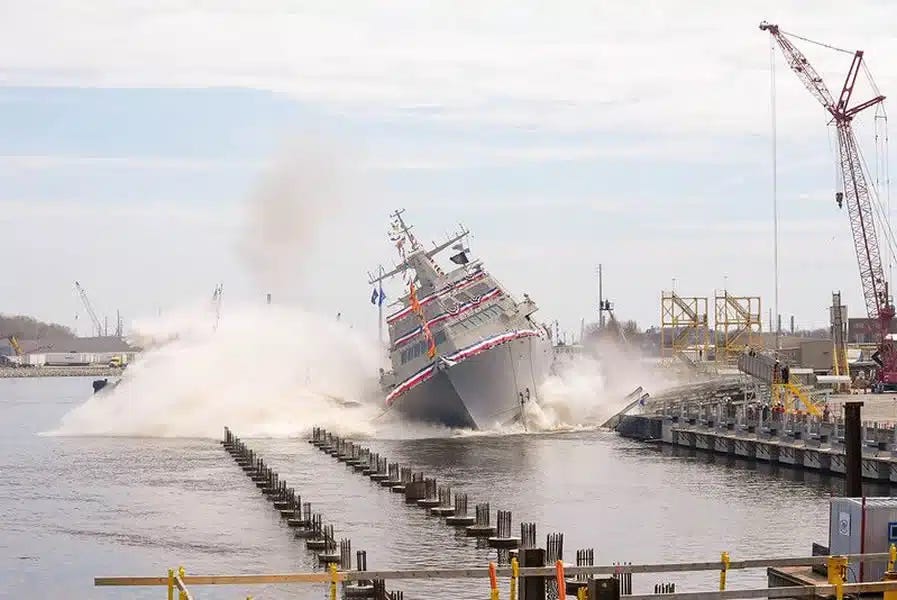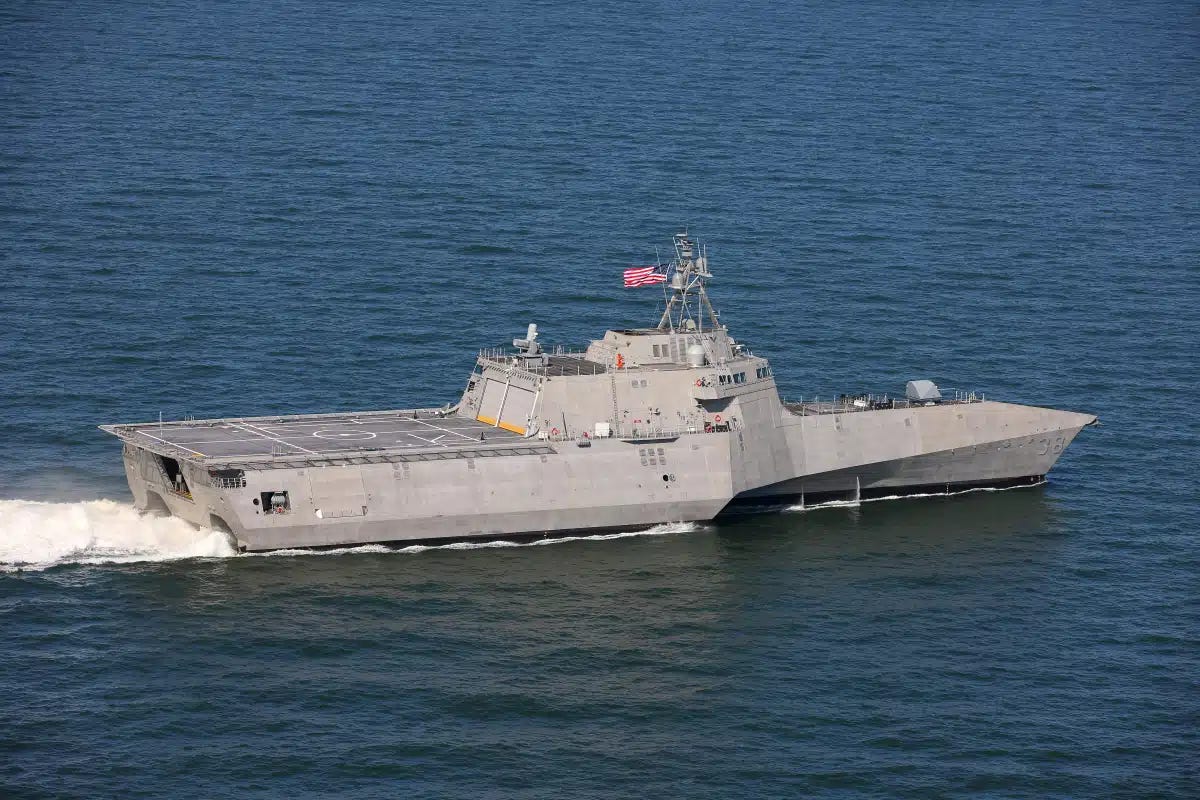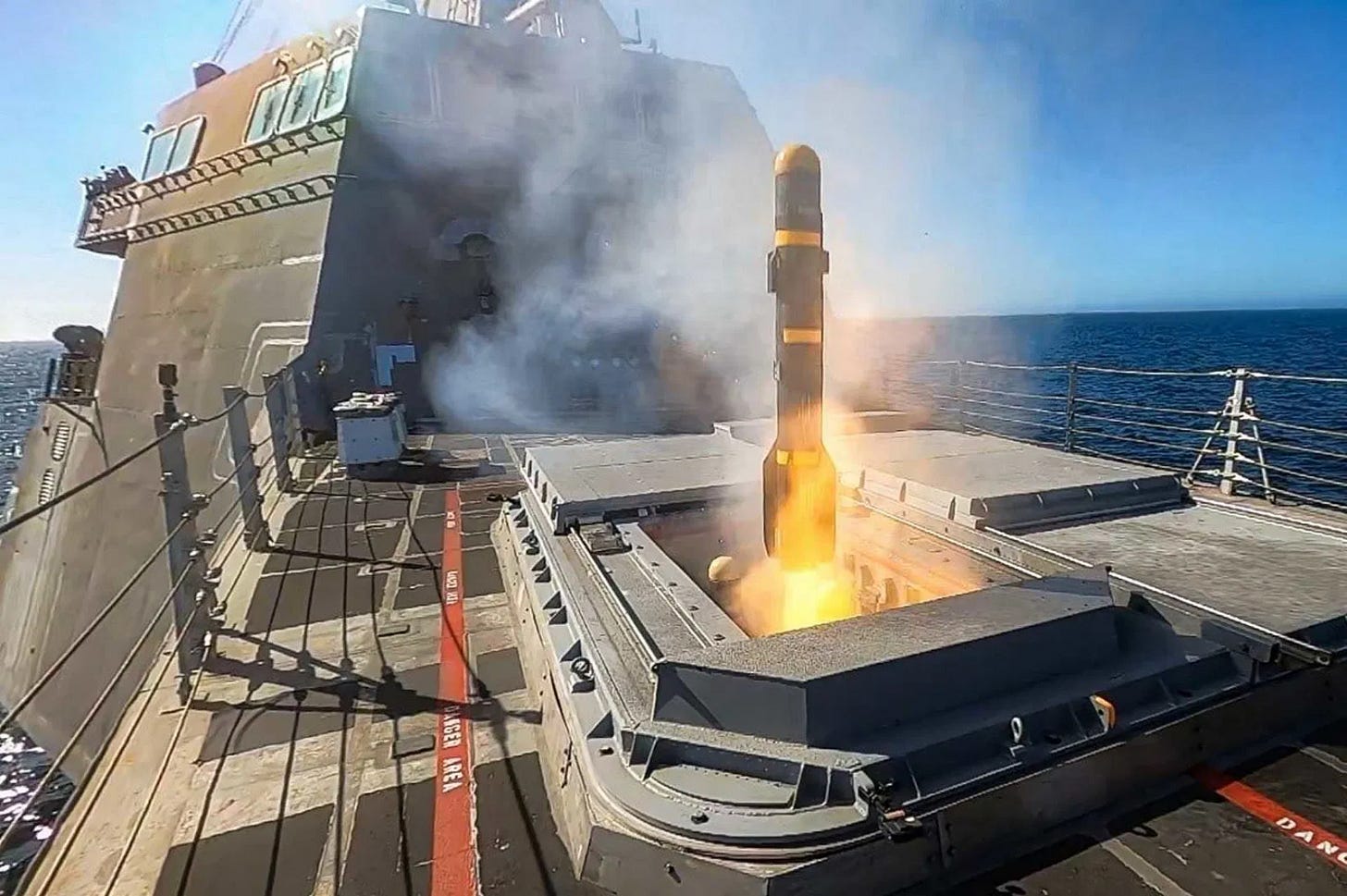A Love Letter to the Littoral Combat Ship: Future Use Cases for the Despised Design
A Case for Repurposing the Littoral Combat Ship in Modern Naval Warfare
For the better part of two decades, the U.S. Navy’s Littoral Combat Ship (LCS) program has been treated as a symbol of acquisition folly: an expensive experiment that fell short of its transformational promise. Plagued by cost overruns, mechanical issues, and shifting mission priorities, the LCS has been dismissed by many as a failed concept—decommissioned early, rejected by foreign partners, and critiqued relentlessly by U.S. defense commentators.
But that narrative is beginning to fray.
Rethinking the LCS: Niche & Nimble
While the LCS remains a cautionary tale in procurement mismanagement, it also embodies a rare and underappreciated virtue in modern naval architecture: modularity married to speed. As near-peer competitors field increasingly distributed and unconventional threats, the Navy should not overlook the platform's potential to contribute meaningfully to the fleet in niche but vital roles. What follows is not a defense of the LCS as it was originally envisioned, but rather an argument for its pragmatic use as a multi-role utility ship in a new era of hybrid maritime warfare.
A Platform Reborn: Emerging Capabilities
The final Independence-class LCS, USS Pierre (LCS-38), recently completed sea trials, marking the end of a tumultuous chapter but also signaling a pivot toward renewed strategic utility. Recent hulls have received lethality upgrades, redefining what these ships are capable of.
The most consequential transformation is the integration of the Mk 70 Payload Delivery System (PDS), a modular launcher that has enabled the firing of the SM‑6 missile from an LCS—a capability previously unthinkable. Former Secretary of the Navy Carlos Del Toro declared that the Mk 70 “gives the service tremendous firepower,” likening it to the Army's Typhon launcher and reinforcing the Navy's growing interest in distributed, containerized fire support.
Additionally, certain LCS platforms have gained counter-drone capabilities, including Hellfire missiles and improved sensors for intercepting low-end aerial threats. In maritime theaters saturated with unmanned systems—like the Red Sea and Strait of Hormuz—these upgrades allow LCS to serve as a nimble C-UAS picket, enabling ambush-style layered defense.

Realistic Roles for an Imperfect Ship
Rather than viewing the LCS as a failed “streetfighter,” the Navy should embrace its evolution into a high-speed, modular utility platform optimized for five mission types:
1. Manned-Unmanned Teaming (MUM-T) Host Vessel
In 2024, the Navy deployed its first operational mine warfare USV aboard an LCS. Subsequent deployments have validated the concept, marking the beginning of a more autonomous MCM strategy. With a reconfigurable mission bay and large flight deck, the LCS is well-suited to serve as a drone mothership in gray zone environments—supporting USV, UUV, and UAV operations in areas where larger surface combatants are either too vulnerable or politically escalatory.
2. Maritime Security and Interdiction
Though not survivable in peer-to-peer combat, the LCS is cheaper to crew and operate than a destroyer. This makes it ideal for interdiction patrols, counter-piracy, and economic exclusion zone enforcement. In chokepoints like the Bab el-Mandeb or Sulu Sea, where UAV and FAC threats persist but full-scale hostilities are unlikely, the LCS offers surgical presence without risking a billion-dollar warship.
3. Conventional Deterrence by Saturation
The ability to field SM-6 and Tomahawk missiles from containerized launchers means LCS units can now contribute to long-range strike architectures. A squadron of LCSs outfitted with Mk 70 systems could flood a theater with additional missile tubes in a crisis, acting as a “missile sponge” to complement more expensive destroyers and submarines. This turns the LCS into a “many and good enough” platform that fits cleanly into the logic of Distributed Maritime Operations.
4. Forward Deployed Crisis Response
With their shallow draft, high speed, and modular space, LCS platforms are well-suited to support expeditionary units in austere environments. In scenarios like embassy evacuations, SOF insertions, or HA/DR responses, LCSs can rapidly surge forward, support helicopter ops, and loiter for extended periods—all without drawing strategic escalation.
5. Defense Experimentation and Exportable Doctrine
Though foreign export attempts have failed, the LCS offers unique value as a testbed for modular combat systems. With its open architecture and containerized design, it can host emerging technologies—EW suites, directed energy weapons, cyber defense nodes—without compromising higher-end assets.

The Value of Utility in a Constrained Fleet
It is tempting to view the LCS through a binary lens: a failed ship, therefore useless. But that outlook ignores procurement realities and the urgent need to field combat-effective hulls now. With destroyers aging and the Constellation-class behind schedule, the Navy should not be discarding seaworthy platforms, especially those that have undergone iterative upgrade cycles.
Indeed, the LCS should be treated as the Navy’s “Swiss Army knife”—not perfect, not irreplaceable, but uniquely versatile in an age of budget pressure and operational overextension.

Conclusion: A Posture of Reassessment
Naval history is full of classes that were derided in their early years, only to become critical in future conflicts. From diesel-electric submarines to carrier-based aviation, innovation often arrives awkwardly.
The Littoral Combat Ship may never be beloved—but if it is repurposed, rearmed, and reimagined, it can still serve with value and distinction. This is not a plea to resurrect a failed acquisition strategy, but a call to extract maximum value from the ships we have, in the conflicts we face, with the urgency they demand.
Editor’s Note: the following op-ed draws on a mix of articles, multimedia, and forums I follow, with sources cited accordingly. All opinions expressed are solely my own and do not represent the views of anyone else.





